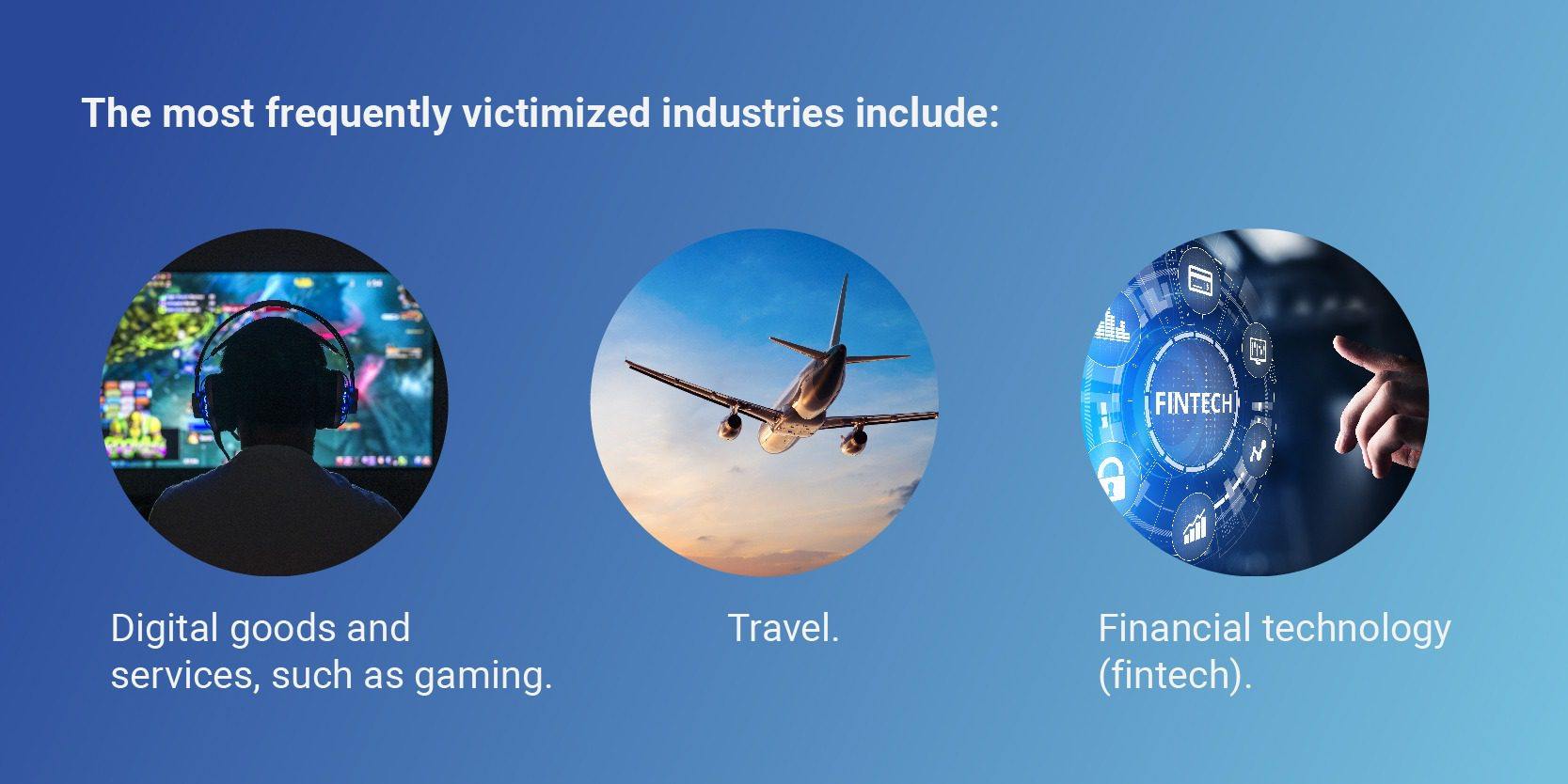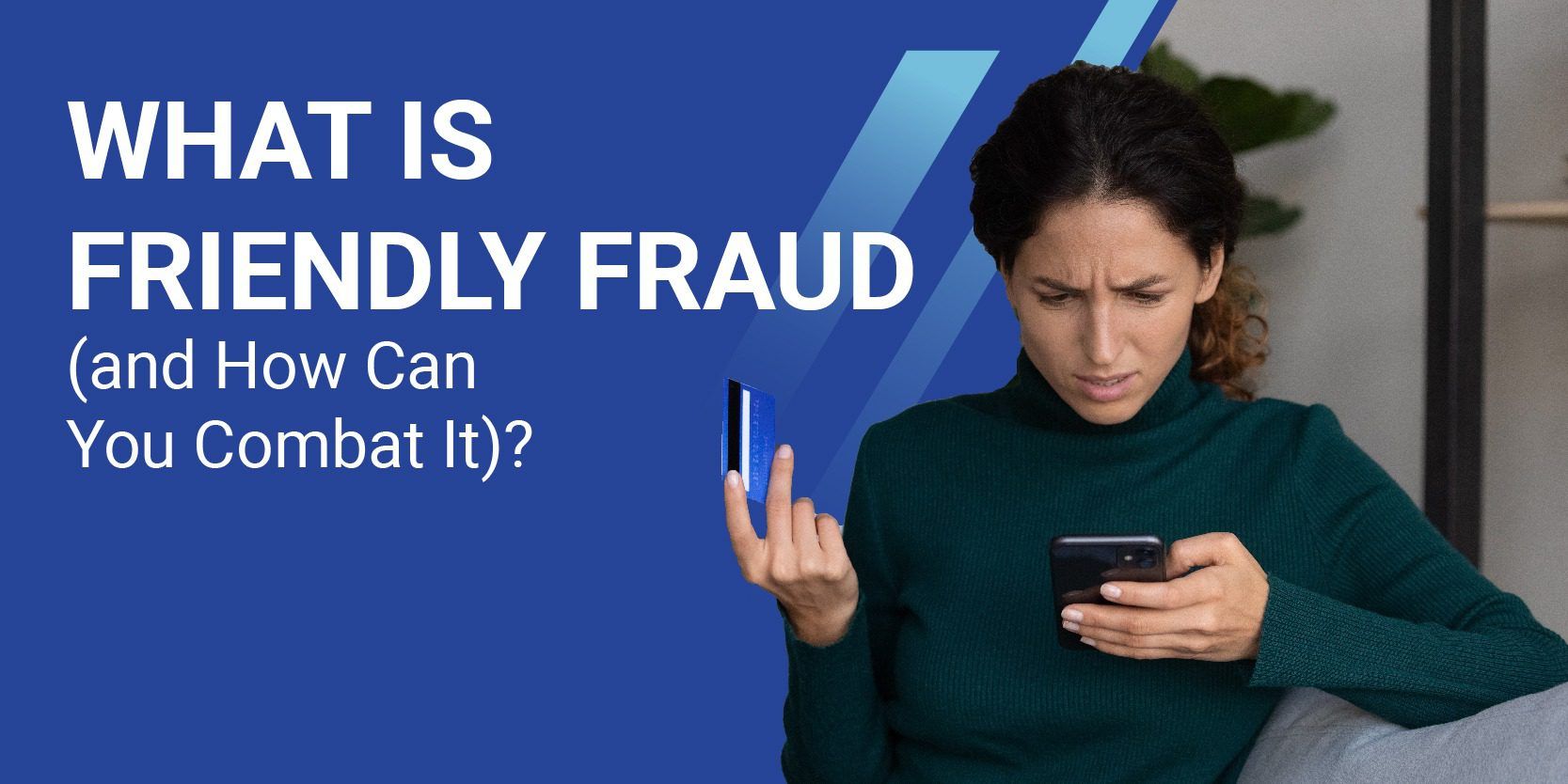While businesses must prevent a variety of fraud types, the most dangerous fraud is often the one that goes unnoticed for extended periods, and with no way of identifying malicious activity or the extent of damage caused.
Learn the fundamental tenets of this kind of fraud, its prevalence, the short- and long-term damage it can do and how to potentially prevent it in this blog.
What Is Friendly Fraud?
Friendly fraud is a type of first-party fraud that typically refers to a customer attempting to dispute a legitimate transaction made with a credit card, debit card or other form of electronic payment, with their bank. It has a few different forms, which are each a bit different.
Types of Friendly Fraud
Accidental
As the term “friendly” implies, a customer who commits accidental friendly fraud often genuinely believes they’ve been mistakenly or illegitimately charged and, therefore, initiates a chargeback. Some common scenarios that may result in accidental friendly fraud include:
- Faulty memory: If a customer doesn’t remember making a purchase, they may file a faulty fraud report.
- Unrecognizable name: If an organization’s billing descriptor is different from the company name or simply unrecognizable, a customer could suspect fraud and initiate a chargeback.
- “Left-hand/right-hand” or shared payment method: This can occur when a single payment method is shared between family members and someone is unaware of another valid user’s purchase.
Intentional
Intentional friendly fraud, on the other hand, is most often premeditated. With this type of friendly fraud, the person initiating the chargeback has a malicious motive; for example, to keep the purchased goods and get their money back.
Refund Abuse
Refund abuse typically refers to the misuse or exploitation of a company’s refund policy by customers. It’s a form of intentional friendly fraud that happens in a few distinct ways such as repeatedly buying and returning items, exploiting loopholes in the refund process or making false claims to get refunds for products or services.
How Does Friendly Fraud Work? (Hint: It’s In the Name)
When friendly fraud “works,” it’s often because the consumer believes their complaint is genuine, even though they’re mistaken. If a charge has been forgotten about or made in error, it’s still a legitimate transaction.
Sometimes, this type of issue can be resolved so a fraudulent chargeback isn’t initiated. For example, if the purchase was legitimately made in error, the merchant may be able to invalidate it (if it’s reported soon enough) or the customer can return the item once it’s received.
Alternatively, if the consumer reported their card stolen, the credit card issuer can freeze and/or cancel the card, inform all affected parties and perhaps (though not always) refund the purchase and stop the chargeback.
The fraud occurs when the consumer requests a chargeback from their bank or the merchant and it’s approved. In cases of intentional and malicious chargeback fraud, the claimant manages to convince the issuing bank or merchant that they’ve been defrauded.
For banks and merchants, having proper fraud prevention measures in place is critical. Without them, illegitimate chargebacks and their consequences are difficult to undo.
The Prevalence (and Harm) of Friendly Chargeback Fraud
Regardless of intent or cause, friendly fraud is a serious problem, and it’s growing in prevalence. The rise in popularity of e-commerce all but guaranteed the heightened risk of both friendly chargebacks and those with malicious intent. And because e-commerce has expanded so much, especially since the pandemic, it’s not exactly a reversible trend.
Estimates about just how much chargebacks cost merchants vary, however, seeing figures for lost revenue of $100 billion or north thereof isn’t uncommon. In 2022, the average value of a chargeback was $192.53.
The most frequently victimized industries include:
- Digital goods and services, such as gaming.
- Travel.
- Financial technology (fintech).
Aside from the losses of the chargebacks themselves, merchants that issue them frequently enough may eventually receive a punitive chargeback fee from payment processors on each claim. Worse yet, if the problem continues, processors may even elect to sever the business relationship with the merchant. This can be particularly painful for a small business, where the losses from friendly fraud and the consequences that follow could greatly affect profitability and, if it got bad enough, could even force them to close shop.

Identifying and Combating Friendly Fraud
To stay on top of friendly fraud, it’s important for merchants to investigate each and every chargeback dispute. Depending on the size of the business or how many sales are typically made each month, this can cost a lot of valuable time. Still, in the long term, it’s worth it — especially if it means saving hundreds of dollars on potential fraudulent chargeback losses.
To do this effectively, there are two crucial steps to take:
- Review purchase details carefully and provide them to the issuing bank that initiated the chargeback.
- Contact the customer. Doing this will allow you to identify whether or not the chargeback was truly a mistake on their part or even potentially on yours. If it was a mistake on the customer’s end, it may be resolvable in some way. If the fault lands on the merchants, you’ll want to know if there are any pressing problems with your payment process that could have caused the issue.
While these are important steps to take, disputing a chargeback isn’t always successful. That’s why it’s important for merchants to take preventative measures rather than being reactive. Although it is nearly impossible to prevent friendly fraud altogether, there are effective ways to reduce it and the effect it has on your business.
Here are three ways merchants can increase and bolster their fraud prevention practices:
Collect Data
Data collection is an important part of fraud prevention. The more purchase data you can collect (within reason), the easier it will be to identify suspicious patterns and pinpoint the source of both repeated friendly fraud and intentional chargeback fraud. Valuable information to collect includes data such as:
- Order histories.
- Exact transaction records.
- Logistics.
- Delivery details.
Implement a Return Policy
An understanding customer is often on the other end of genuine friendly fraud. Implementing a simple return policy can help mitigate risk. Ideally, the return processes should be as easy as possible to maximize the likelihood of both intentional and unintentional friendly fraudsters following through with it. This might include providing preprinted shipping labels and packaging and even covering return shipping costs.
Invest In Authentication Solutions
Perhaps the most effective way to mitigate friendly fraud is to get ahead of it using technology. Invest in leading-edge identity verification and authentication solutions and follow know-your-customer (KYC) best practices to get — and stay — ahead of friendly fraudsters and lessen the negative impacts of excessive chargeback claims.
Using effective authorization and authentication solutions allows users to review and verify orders and, in scenarios where large purchases are made, use biometrics to authenticate and finalize orders.
Similarly, knowing your customers and abiding by KYC best practices is crucial for ensuring that you’re not selling to repeat offenders over and over again. Examples of KYC techniques include:
- Assessing risk on an individual level.
- Effectively verifying customer identity.
- Keeping accurate and up-to-date records.
- Regularly monitoring customer behavior.
Repel Fraud Risks With AuthenticID
AuthenticID provides a robust selection of ID verification and authentication solutions — including FraudShield, the solution that combines biometric authentication with scammer watchlist creation. FraudShield can stop even the most sophisticated synthetic fraud or first-party fraud efforts. Here’s how AuthenticID enables fraud detection for your business:
- Biographical enrollment: Intentional friendly fraudsters are no strangers to stealing information. Match up IDs and selfies using face scan technology to ensure the validity of the ID being used.
- Bad actor watch list: Once an offender, always an offender. Keep track of bad actors on a watchlist that records selfies, IP addresses and more.
- Bad document watchlist: Don’t give fraudsters the chance to submit multiple documents in an attempt to spoof your system. The bad document watchlist uses AI to quickly update and manage a watchlist of phony documents.
- Biometric identification: It’s already difficult for fraudsters to reproduce facial features to bypass anti-fraud measures. Biometric identification makes it even more difficult.
Build a first line of defense against friendly fraud today. Contact AuthenticID to learn more.
